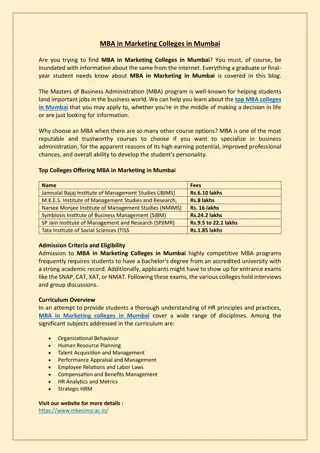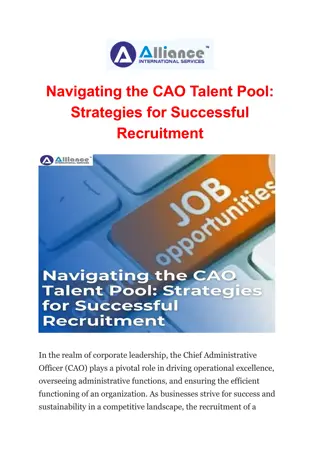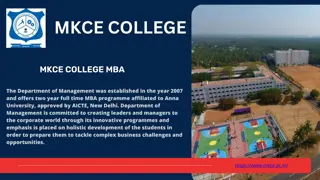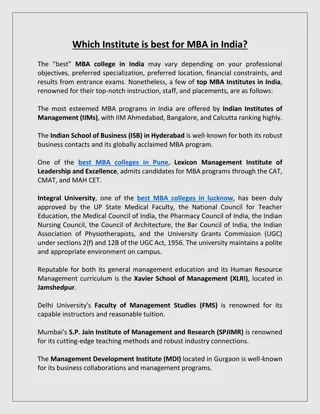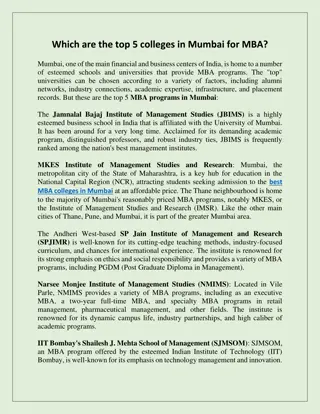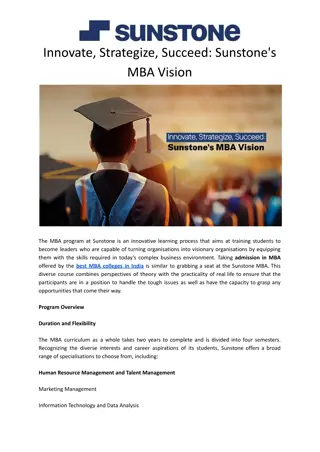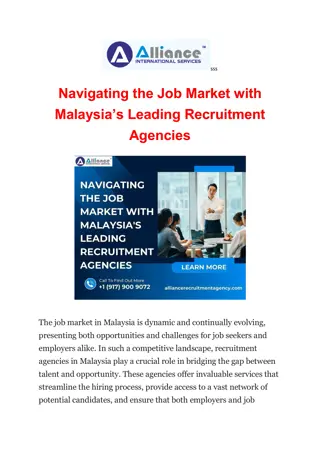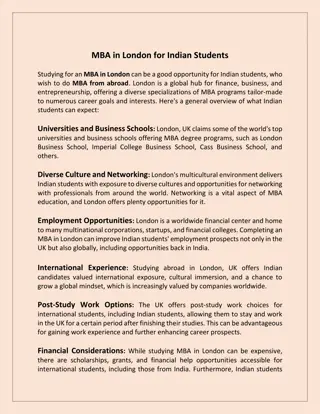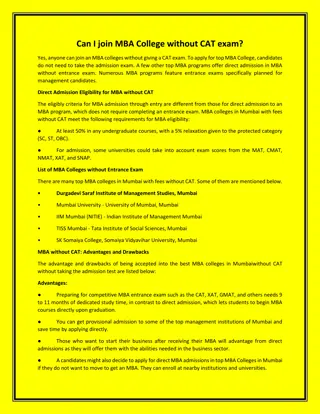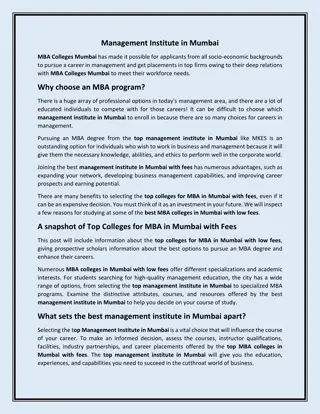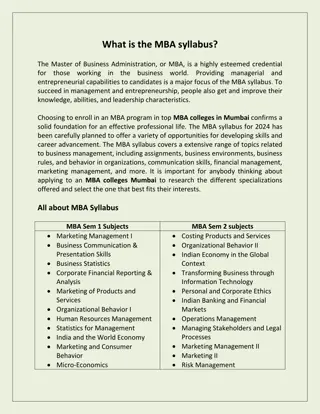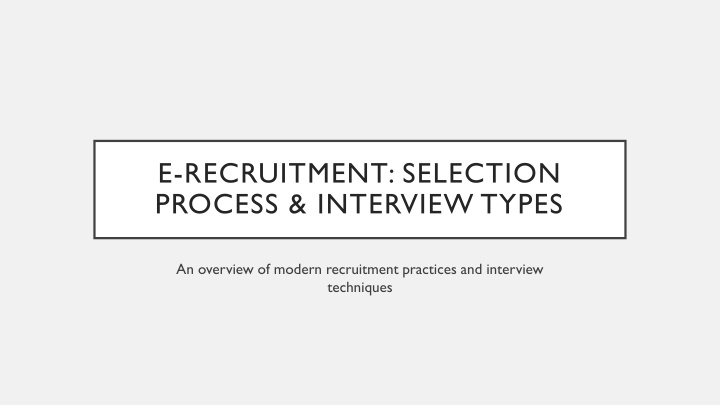
Modern Recruitment Practices and Interview Techniques Overview
Explore the world of e-recruitment, selection processes, and various interview types in today's competitive job market. Learn about the benefits, steps, and key considerations in the recruitment process, as well as different interview formats like phone, video, in-person, and AI-based interviews. Stay informed about trends shaping the hiring landscape for finding the best-fit candidates efficiently.
Download Presentation

Please find below an Image/Link to download the presentation.
The content on the website is provided AS IS for your information and personal use only. It may not be sold, licensed, or shared on other websites without obtaining consent from the author. If you encounter any issues during the download, it is possible that the publisher has removed the file from their server.
You are allowed to download the files provided on this website for personal or commercial use, subject to the condition that they are used lawfully. All files are the property of their respective owners.
The content on the website is provided AS IS for your information and personal use only. It may not be sold, licensed, or shared on other websites without obtaining consent from the author.
E N D
Presentation Transcript
E-RECRUITMENT: SELECTION PROCESS & INTERVIEW TYPES An overview of modern recruitment practices and interview techniques
OVERVIEW Introduction to E-Recruitment Overview of the Selection Process Steps in the Selection Process Key Considerations Types of Interviews in E-Recruitment Structured vs.Unstructured Interviews Video/Remote Interviews Assessment Centres Conclusion
WHAT IS E-RECRUITMENT? Definition: E-Recruitment refers to the use of digital platforms, software, and online tools to streamline the recruitment process. Components: Online job postings Resume database searches Candidate screening tools (AI-driven assessments) Video interviews and virtual hiring events Benefits: Broader reach and access to global talent Cost-effective Time-saving and efficient
OVERVIEW OF THE SELECTION PROCESS Goal: Identify the best-fit candidate for the job. Steps in the Selection Process: 1.Job Posting & Sourcing Candidates Use of job boards, LinkedIn, social media. 2.Application & Resume Screening ATS (Applicant Tracking System) filters and keyword searches. 3.Initial Screening Automated responses, pre-recorded video responses, or phone screening. 4.Interviews Virtual, video, or in-person. 5.Assessment Skills tests, psychometric tests, coding challenges, etc. 6.Offer & Negotiation 7.Onboarding
KEY CONSIDERATIONS IN THE SELECTION PROCESS Candidate Experience: Ensure clarity, transparency, and prompt communication. Diversity & Inclusion: Implement unbiased tools and processes. Efficiency: Use AI tools to shorten timelines and improve candidate matching. Data Security: Maintain confidentiality of candidates' personal and professional data.
TYPES OF INTERVIEWS IN E- RECRUITMENT Phone Interviews Video Interviews (One-way or Two-way) In-person Interviews Assessment Centres AI-based Interviews
PHONE INTERVIEWS Overview: Initial screening or pre-interview. Conducted remotely, often by HR or the recruiter. Advantages: Cost-effective and time-saving. Helps assess communication skills and personality. Challenges: Lack of visual cues. Limited ability to assess non-verbal communication.
VIDEO INTERVIEWS One-way Video Interviews: Candidate records answers to pre-set questions (e.g., HireVue, Spark Hire). Allows recruiters to review responses at their convenience. Two-way Video Interviews: Live interaction with the candidate (e.g., Zoom, MS Teams). Real-time assessment of skills, communication, and presentation. Advantages: Convenient for both parties, reduces travel costs. Provides visual insights into the candidate. Challenges: Technical issues (internet connectivity, software glitches).
IN-PERSON INTERVIEWS Overview: Traditional method of assessing candidates. Typically conducted for final rounds. Advantages: Face-to-face interaction provides deeper insights into the candidate s character. Better assessment of body language and soft skills. Challenges: Time-consuming. Expensive, particularly for remote candidates.
ASSESSMENT CENTRES Overview: A series of structured exercises used to evaluate candidates. Includes group discussions, role-playing, problem-solving tasks, and interviews. Advantages: Comprehensive evaluation of a candidate s competencies. Provides a realistic job preview. Challenges: Resource-intensive and costly. Time-consuming for both candidates and employers.
AI-BASED INTERVIEWS Overview: Use of AI to conduct preliminary interviews (e.g., Chatbots, AI-powered video interview platforms). AI assesses responses based on pre-determined metrics such as speech patterns, emotional tone, etc. Advantages: Can screen large volumes of candidates quickly. Provides consistent evaluations. Challenges: Risk of bias in AI algorithms. Limited to the information provided through verbal responses.
Comparison of Interview Types Interview Type Advantages Challenges Phone Interview Cost-effective, quick, simple. Lacks non-verbal cues. Convenient, time-efficient, easy to schedule. Video Interview (One-way) No interaction, feels impersonal. Video Interview (Two-way) Real-time assessment, flexible. Tech issues, time zone challenges. In-depth assessment, personal interaction. In-person Interview Time-consuming, expensive. Comprehensive, multi-dimensional evaluation. Assessment Centres Expensive, time-intensive. AI-based Interview Fast, consistent, scalable. Limited scope, AI bias.
BEST PRACTICES FOR E-RECRUITMENT INTERVIEWS Prepare candidates in advance: Share interview format and expectations beforehand. Test technology (Video Interviews): Ensure that the software and equipment are working smoothly. Ensure fair assessment: Avoid bias by standardizing evaluation criteria and questions. Provide feedback: Offer constructive feedback, especially after assessment centres.
CONCLUSION E-Recruitment and its interview techniques offer significant advantages for both employers and candidates. By leveraging modern interview types, companies can create a more efficient, cost-effective, and inclusive recruitment process. Future Trends: Increased use of AI and automation. More personalized candidate experiences. Greater focus on remote-first recruitment.


